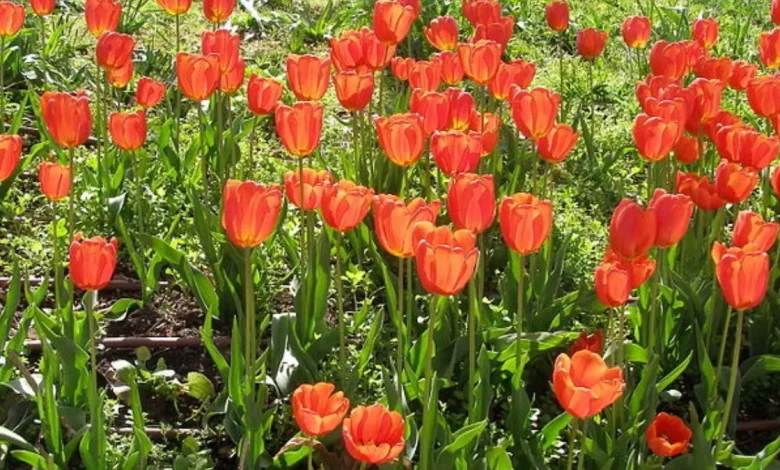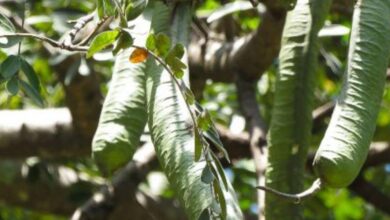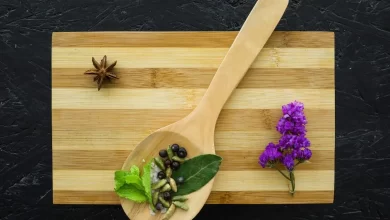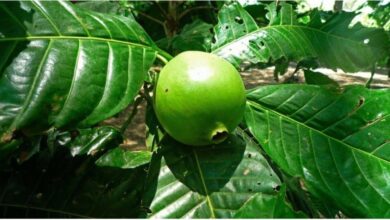The Complete Guide to Didier’s Tulip: Scientifically as Tulipa Gesneriana

Didier’s tulip, scientifically known as Tulipa gesneriana, is one of the most popular and widely grown ornamental flowers in gardens around the world. This graceful spring-blooming bulb has captivated people for centuries with its vivid colors and elegant blooms.
This article will provide a comprehensive guide to Didier’s tulip, exploring its origins and history, botanical characteristics, traditional uses, cultivation, and more. Whether you are a gardener looking to plant tulips or simply appreciate the beauty of flowers, this guide will give you a deeper understanding of this iconic bloom.
Table of Contents
Brief History and Origins
Didier’s tulip, often called the garden tulip, has a long and storied history. The wild progenitor species of this tulip originated from a region stretching from Portugal all the way to China. The native range includes areas like the Iberian Peninsula, Greece, Turkey, the Balkans, Ukraine, southern Siberia, Mongolia, and northwest China.
Tulips were first introduced to Europe from Turkey in the mid-1500s. The exotic tulip became incredibly fashionable and triggered “Tulip Mania” in the Netherlands in the early 1600s, making tulip bulbs more valuable than gold at the peak of this phenomenon. The Dutch became leading cultivators of tulips and developed many hybrids and cultivars from species like Didier’s tulip.
Today, Didier’s tulip and its hybrids remain extremely popular ornamental flowers grown commercially worldwide. The Netherlands is still the top producer of tulip bulbs globally.
| Name | Didier’s tulip |
|---|---|
| Scientific name | Tulipa gesneriana |
| Family | Liliaceae |
| Plant type | Perennial, bulb |
| Mature size | 14-18 inches tall, 6-9 inches wide |
| Sun exposure | Full |
| Soil type | Rich, well-drained soil |
| Soil pH | Acidic, neutral |
| Bloom time | Spring |
| Flower color | White, yellow, orange, pink, red, maroon, purple, variegated and with coloured streaks, often blotched near base |
| Hardiness zones | 3-8 (USDA) |
| Native area | Europe, Asia |
| Toxicity | Toxic to humans, toxic to pets |
| Common names | Tulip, Didier’s Tulip, Garden Tulip, Tall Garden Tulip, Gesner’s tulip |
Also Read: Borojo: The Exotic Fruit with Untapped Health Potential
Botanical Facts and Plant Characteristics
Didier’s tulip is a herbaceous perennial flowering plant that grows from a bulb. Here are some of the key botanical facts about this ornamental flower:
- Scientific Name: Tulipa gesneriana
- Common Names: Garden tulip, Didier’s tulip, Gesner’s tulip
- Plant Family: Liliaceae (lily family)
- Native Range: Portugal to China
- Plant Growth: Herbaceous perennial growing from a bulb, reaches height of 35-45 cm
- Flowering Season: Spring blooming, flowers appear in April to May
- Flower Description: Single large, showy, cup-shaped flower with 3 petals and 3 sepals in colors like red, pink, purple, yellow, white, orange.
- Leaves: Alternate, green, slender leaves with lance-shaped form.
- Fruit: Oval to round seed pod that splits to release flat, disc-shaped seeds.
The tulip flower has an elegant, goblet shape formed by three petals and three outer sepals. The petals are often brightly colored in hues of red, pink, purple, yellow, white, and orange. Multiple colors and patterns can appear on a single bloom. The sepals are green and recurve backwards.
Didier’s tulip produces grayish-green, slender leaves in an alternate pattern along upright stems. The leaves have a lanceolate shape with pointed tips.
After the flower fades, an oval to elliptical seed pod develops. This dry fruit ripens and splits open to scatter flat, disc-shaped brown seeds. Each pod contains many seeds arranged in two rows.
Medicinal and Edible Uses
In addition to being an extremely popular ornamental plant, Didier’s tulip has some traditional medicinal uses. The petals can be used to make soothing skin salves and poultices. Applying crushed tulip petals helps treat skin inflammations like rashes, burns, and insect bites.
Didier’s tulip also has edible bulbs and flowers. The bulbs can be dried, powdered, and added to flours for baking. The flower buds and petals make colorful, mild-flavored additions to salads. Petals can also be used to create floral syrups and to candy or crystallize as edible decorations.
Also Read: Marula Fruit Magic: Boost Your Health Naturally
Cultivation and Growing Tips
Didier’s tulip thrives in temperate climates with cool winters and dry summers. Here are some tips for successfully growing this flower:
- Planting Location – Choose a spot with full sun to partial afternoon shade. Needs well-draining soil.
- Soil – Enrich soil with compost or manure. Neutral to slightly acidic pH is ideal.
- Planting Time – Plant bulbs in fall before first frost. Dig holes 8 inches deep and 5 inches apart.
- Care – Water during spring growth and blooming. Allow foliage to die back naturally after blooming.
- Fertilizer – Apply balanced fertilizer or bulb food in fall and again in spring.
- Hardiness Zones – Hardy in zones 3-8. Provide winter mulch in colder zones.
- Pests and Diseases – Watch for aphids, slugs, and Botrytis blight. Avoid overwatering.
- Propagation – Propagate by dividing bulbs after flowering. Seeds can also be collected and sown.
For the best floral display, plant Didier’s tulip bulbs in drifts or clusters of a single color rather than individually. Combine early, mid, and late-blooming varieties for a prolonged spring show.
Popular Uses in Gardens and Floral Design
The vibrant, elegant blooms of Didier’s tulip make it an extraordinarily popular flower for gardens, flower arrangements, and special events. Here are some of the top ways this tulip is used worldwide:
- Ornamental gardens – Planted in flower beds, borders, containers. Prized for big, colorful spring blooms.
- Cut flower – Used in bouquets, centerpieces, corsages. Lasts up to a week as a cut flower.
- Weddings and events – Tulips frequently used in bridal and wedding flowers and décor.
- Floral gifts – Given as floral arrangements or potted plants for birthdays, anniversaries, baby showers.
- Landscaping – Planted in parks, public gardens, roadside plantings, commercial landscapes.
Didier’s tulip remains a garden staple because of its outstanding beauty, diversity, and versatility. There are now thousands of tulip varieties and colors to match any decorative need or personal taste.
Also Read: 10 Carao Fruit Facts That Will Blow Your Mind
Fun Facts about Didier’s Tulip
Beyond basic botany and gardening uses, Didier’s tulip has some intriguing history and unique properties:
- There are currently over 3,000 named varieties of Didier’s tulip with diverse colors and flower forms.
- Tulip “breaking” refers to the streaks, stripes, and flamed patterns seen on the petals, caused by a viral infection.
- During the Dutch “Tulip Mania”, prices for rare broken tulip bulbs skyrocketed to astronomical prices and then crashed in 1637.
- Tulips can continue blooming indoors even after being cut. The vascular system in the stem draws water without needing leaves.
- Tulips close up their flowers at night and on cloudy days to protect pollen from rain and reopen when conditions improve.
- The black center at the base of many tulip blooms is designed to guide pollinators straight into the flower’s reproductive parts.
- Different species of tulips have evolved to bloom at varying times based on when their preferred pollinators are active.
- Thin white ridges inside the flower guide bees and flies straight to the nectar-producing ovary.
- Tulip petals create their vivid colors through pigments, not through sunlight absorbed like most flowering plants.
The incredible diversity and unique adaptions of the tulip continue to fascinate plant lovers and scientists alike even centuries after their introduction to Europe.
Also Read: Monkey Fruit: A Nutritional Marvel with Number of Health Benefits
Tulipa Gesneriana Inspiration Around the World
The tulip has inspired art, design, and culture worldwide. Some examples include:
- 17th century Dutch Golden Age paintings featuring extravagant tulip arrangements.
- Turkish kilim tapestries and textiles with tulip motifs dating back centuries.
- The red tulip symbol used by the International Language of Flowers to convey a declaration of love.
- Turkish tulip festivals featuring parades and displays with millions of blooms.
- Tasselled tulip-shaped turbans worn during the Ottoman Empire.
- Contemporary tulip-covered dresses created by haute couture fashion designers.
- Vancouver’s annual Tulip Festival with over 300,000 bulbs planted in public parks and gardens.
- Tulip-shaped architectural elements on buildings, fountains, furniture, and decorative objects.
Didier’s tulip continues be a muse for great artistic works and cultural celebrations that capture the beauty and imagination of this singular blossom.
Conclusion
From its long cultivation history beginning in ancient Constantinople to its iconic status in Amsterdam, Didier’s tulip has had an outsized influence on art, trade, and culture. Yet this beloved flower’s grace, colors, and form speak for themselves as the source of inspiration. This guide covers the breadth of this fascinating flower – its biology, symbolism, cultivation, and more. May your appreciation for the classic tulip bloom even deeper.
References:
- Eisenstein, C. (2018). Tulips: A Guide to Cultivation, History and Enjoyment. Crowood Press UK.
- Christenhusz, M. et al. (2013). Tulipa gesneriana: the history behind Tulipa sect. Tulipa. Curtis’s Botanical Magazine, 30(4), 362-378.
- Everett, D. (2013). The Genus Tulipa: Tulips of the World. Royal Botanic Gardens, Kew.
- Zonneveld, B. (2009). The systematic value of nuclear genome size for all species of Tulipa L. (Liliaceae). Plant Systematics and Evolution, 281(3), 217-245.
To Know more visit the below sources:
- https://en.wikipedia.org/wiki/Tulipa_gesneriana
- https://plants.usda.gov/home/plantProfile?symbol=TUGE
- https://www.cabidigitallibrary.org/doi/10.1079/cabicompendium.117687
- https://gd.eppo.int/taxon/TULGE
- https://pfaf.org/user/Plant.aspx?LatinName=Tulipa+gesneriana
- https://davesgarden.com/guides/pf/go/59149/
- https://www.itis.gov/servlet/SingleRpt/SingleRpt?search_topic=TSN&search_value=43105#null
- https://www.sciencedirect.com/topics/agricultural-and-biological-sciences/tulipa-gesneriana
Disclaimer:
This article is only written for basic and general informational purposes only. The Statements contained here have not been evaluated by the FDA and neither the efficacy of these products has been confirmed by FDA-approved research. All information presented here is not meant as a substitute for or alternative to information from health care practitioners.
There’s no guarantee of specific results and the results can vary. Users must not view the content as medical advice in any way. Users are also required to ’NOT SELF-MEDICATE’ and always consult their health care professional before taking any medicines or undergoing any treatment. DivyaAyushCare and the author will not be responsible for any act or omission by the User arising from the User’s interpretation of the content.




